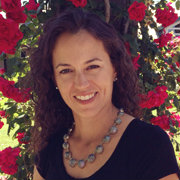“It is not the critic who counts; not the man who points out how the strong man stumbles, or where the doer of deeds could have done them better. The credit belongs to the man who is actually in the arena, whose face is marred by dust and sweat and blood; who strives valiantly; who errs, who comes short again and again because there is no effort without error and shortcoming . . . who at the best knows, in the end, the triumph of high achievement, and who at the worst, if he fails, at least fails while daring greatly.” -Theodore Roosevelt (1910)
Vulnerability is about being in the arena.
Vulnerability is ultimate honesty. It is letting people see who you really are without your armor. It’s the willingness to do something even though you know it might fail.
In her June 2010, TED Talk titled “The Power of Vulnerability,” Brené Brown said that her extensive research into the topic found that vulnerability is the “birthplace” of joy, creativity, belonging, and love. She added innovation and change to that list in 2014.
If vulnerability is that powerful, then it’s important that we understand what it is, what it takes to be vulnerable, and what kills or hinders it.
Vulnerability is exposure, emotional risk, and uncertainty, and for that reason, it can feel like weakness and it can feel dangerous, but it’s not. In fact, it’s the opposite. That being said, vulnerability is risky. If it weren’t, then it wouldn’t be difficult to do. It’s risky because it opens us up to criticism, judgment, and failure.
Vulnerability requires courage
For that reason, Brown says that vulnerability requires courage and compassion. She says that you need “the courage to be imperfect” and “the compassion to be kind” to yourself first, and then to others.
The courage to be vulnerable is essential because without it we can’t have connection, which Brown says is our greatest need because without it we can’t experience love and belonging.
“Connection is why we’re here. We are hardwired to connect with others, it’s what gives purpose and meaning to our lives, and without it there is suffering.” But you can’t have connection without vulnerability, she says, because in order to connect with others “we have to allow ourselves to be seen, really seen.”
The primary enemy of vulnerability is shame. Shame is the feeling that there is something about us that if someone else sees it that we won’t be worthy of love and belonging or of connection. Brown says that shame plays two tapes: “Never good enough” (or fill in the blank) and “Who do you think you are?”
Other enemies of vulnerability include comparison, perfectionism, need for control, pretending that we have it all together when we don’t, and downplaying our true thoughts and desires.
When we fail to be vulnerable and we are feeling the pain that comes from lack of connection, we cope by numbing those hard feelings through addiction, perfection, and pretending. But by numbing the bad emotions, we also numb the good emotions.
We are imperfect
Brown says that vulnerability starts with understanding that we are imperfect and we will struggle, but that we are worthy of love and belonging. It is key to believe that we are “enough” and are kind to ourselves and to others when we fail.
Ultimately, in order to be vulnerable, you need to “let go of who you think should be and embrace who you are.”
 Courtney Jorstad joined Top Class Actions in March 2013 as a legal news writer. She graduated in 2005 from the University of California, Irvine, where she served as a newspaper reporter and editor. Courtney worked as a political news writer for a major news publication before joining the Top Class Actions team as a full-time employee.
Courtney Jorstad joined Top Class Actions in March 2013 as a legal news writer. She graduated in 2005 from the University of California, Irvine, where she served as a newspaper reporter and editor. Courtney worked as a political news writer for a major news publication before joining the Top Class Actions team as a full-time employee.

